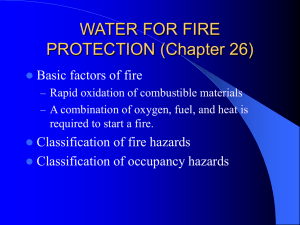


I think the extension of a sprinkler mandate to garages attached to IRC dwelling units may stem from a "more is better" philosophy, though it may be a case of more regulation is more wasteful.Īlternatively, perhaps the absence of prescribing protection in attached garages is deliberate, allowing the AHJ in each jurisdiction to make their own judgment.Read our guide to some upcoming 2021 model code changes-and learn how to use the latest edition of NFPA 13Ģ020 fire protection requirements look drastically different than those in the first model codes that debuted more than a century ago. I am not suggesting that every bathroom should be sprinklered, but if we're going to deviate from the NFPA standard, let's start in the dwelling space and address the highest remaining hazard areas first! Yet even so, some bathrooms do not require protection.īased on this information, it would make more statistical sense, and pose a lesser cost impact (and reduced failure potential in climates subject to freezing), to sprinkler every bathroom rather than garages. The table of Fires and Associated Deaths and Injuries in the NFPA 13R/D identifies that more fires, more deaths, and more injuries originate in bathrooms than in garages. Therefore, if the higher hazard activity occurs while an occupant would be readily aware of a developing fire event, again I see no excessive hazard to the occupants, and would suggest we look to statistical data. If the intent is to protect sleeping occupants and the concern is repair of vehicles in the garage (since parked vehicles are low-hazard) - I can say that I know some good mechanics, but none can perform work in their sleep.

If the intent is to protect occupants from fire with automatic sprinkler protection, and recognizing the sprinkler protection is challenging in unheated spaces (there have been plenty of instances of pipe failures even where dry heads are installed), and recognizing that occupants in a room with immediate exterior access could readily escape, I don't see a big difference between a mud room and a carport or a garage. With regard to similar areas, we could also look to examples in the commercial building code:ģ11.3 Low-Hazard Storage: Parking Garage (open or enclosed)ģ11.2 Moderate-Hazard Storage: Boots and shoes


 0 kommentar(er)
0 kommentar(er)
